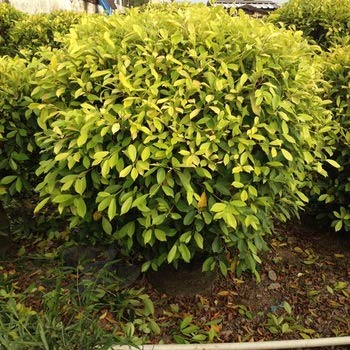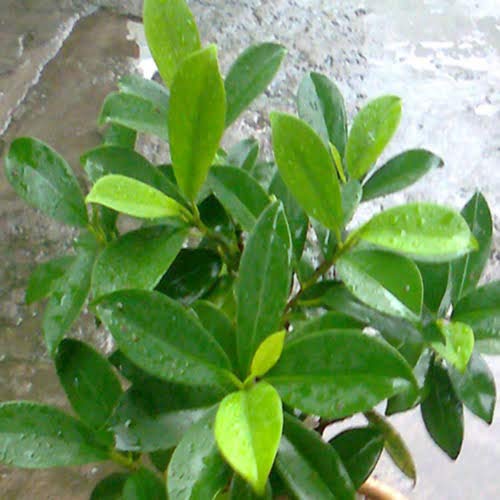


Ficus Panda is easy enough to learn from the characteristic features, namely, the blunted-pointed shape of the leaf plates. So, if you look from a distance, they may seem almost round at the top, but visually perceived as an oval. However, this variety has many features that are characteristic of it.
-
This sort of ficus is the best choice for bonsai. This Plant without assistance as it grows thickens the trunk, as well as its curvature. As a result, there are very spectacular lines. Unique Golden young leaves and fruits favorably distinguish this plant among another plant, as well as small leaf plates. This Plant looks watercolor at any time of the year, as its leaves are painted in a variety of shades of green.
How to water
Watering the plant should be regular and moderate, but the soil in the pot should always be slightly moistened. In the summer it is necessary to water abundantly. At any time of the year, watering should be done only after the top layer of soil dries. Do not allow waterlogging of the earth, and especially stagnation of liquid in it, even for a relatively short period. Remember that excessive humidity is more dangerous than drought (but it is also best avoided if possible). For irrigation is suitable only for soft water. Avoid watering with cold water. In winter, it is recommended to water with lukewarm water, and in spring and autumn, it should be at room temperature.
Air humidity
The plant needs high humidity. To increase this value, it is possible to carry out systematic spraying or install a humidifier. Moisten the leaves can only be soft water. And it is better to take for this purpose melted, distilled or boiled water.
Fertilizer
Feed the plant only in the period of intensive growth from the beginning of the spring to October 1 every 2 or 3 weeks. To do this, it is recommended to use special fertilizers for ficus or complex fertilizers for ornamental deciduous plants.
Ficus bonsai pruning
This plant should be a systematic formation. However, pruning is not recommended at the beginning of the period of intensive growth, in the first spring days, as well as before the transplant, because this procedure greatly weakens the ficus. And in any case, it is impossible to carry out pruning in the process of transplantation. The procedure of formation of the plant is recommended in the first summer weeks or, if necessary, in May. Need to trim only the tips of the branches, and greatly shorten should only branches that stretched out or has been damaged. The objective of this procedure is to make the crown lusher. It is possible to conduct systematic pruning of this tree, giving it a more strict or definite form. He tolerates such procedures well enough, and recovery is quite fast. In those places where the shoots have been cut, branching increases and growth is accelerated, and the direction of the branches changes, which leads to changes in the silhouette of the ficus.
Soil mix
Transplanted a flower only if necessary. In adults, ficus Panda, as well as growing in the form of bonsai is recommended once a year only to replace the top layer of the substrate. This procedure is done in early spring, you have to remove the old top layer of soil and put in the fresh substrate. Transplant such a plant is necessary only if the roots cease to fit in the pot.
Young specimens require regular transplantation, carried out once a year. Transplanting is carried out by the method of handling the ground ball must stay intact. The neck should not be buried, it should be left at the same level. Do not forget to make a sufficiently thick drainage layer on the bottom. So, this is perfect crushed brick and expanded clay. After transplantation, until the ficus begins to grow again, it shading and maintain a higher humidity than usual.




